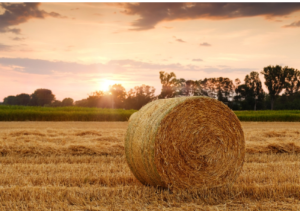The twine that ties up bales of hay is a handy tool. It is also one of the most dangerous items on a farm, as anyone who has ever dealt with horse rescue knows.
Loose twine presents a threat to horses and can cause entanglement in machinery. Picking up twine as you are baling and unbaling hay is a simple step that will help protect livestock and equipment! For more baling twine safety tips, check this out.
 Be Careful
Be Careful
If you work with large bales of hay or other materials compressed into round bales, you must be careful when handling them. One wrong move could result in serious injury or costly machine repair.
Baling twine is used to tie together these bales, and it can also be used to mend fences and reattach tractor parts. However, improper handling can also be dangerous for cattle and wildlife.
When selecting baling twine, check that it comes in a carton with a guaranteed number of feet per spool. It will ensure you get the right amount of twine for the job and don’t need to reload a new carton more often than necessary. It can save time and money and prevent a loss of efficiency caused by having to stop the baling process to reload twine.
Keep Your Eyes Open
At any well-run horse farm, pony club or 4-H barn, baling twine is a staple, and there’s usually abundant. But just because it’s functional doesn’t mean it’s safe – plenty of horror stories of horses getting tangled up in loose twine, resulting in severe injury or death. For more baling twine safety tips, check this out.
Those who ride frequently are always prepared with a roll of twine, as it helps repair anything from broken reins to bridles to stirrup leathers. It can also be beneficial in the field when tying things to a trailer or truck –make sure you don’t forget to check that knot!
Bailing twine is available in various colours and weights, so it’s easy to distinguish the different sizes. When choosing a new carton, double-check the guaranteed number of feet per package; this will help you avoid wasting twine. At Coastal, we carry a selection of round, slit-film twine from manufacturers like BridonMAX, with options that range from 110 to 500 pounds.
Don’t Get Knocked Over
While this may seem obvious, you’d be surprised how many people get knocked over while baling twineing. Keep your eyes open, and don’t move too quickly. Also, don’t walk in front of the baler if you’re not sure it’s completely stopped.
Traditionally, this twine ends up in landfills, piles up on ranchers’ properties (where it can gum up machinery or be eaten by livestock and horses, resulting in serious digestive issues or death), or is burned (which is dangerous due to toxic fumes). But if you plan and recycle, your waste can help Osprey and the wildlife they rely on for food and shelter.
Don’t Forget About Disposal
Most baling twine ends up in landfills, piles up on landowner’s property (where it can gum up machinery or be ingested by livestock and cattle, causing severe digestive problems or death), or is burned (which creates toxic fumes). It takes years for synthetic polypropylene to break down.
It is a shame, as many horse people hoard twine. It can be used for many things – to tie blankets on barred stall doors, loop ribbons over them at horse shows, or hang Show Sheen and fly spray from it.
We recommend an excellent quality, recycled baling twine such as Torfil. It is made from a combination of specific raw materials, giving a new life to what would otherwise be waste products while guaranteeing the same baling performance as virgin twine. It also comes in a convenient carton with guaranteed feet per roll. This way, you get a great product while helping Osprey and other wildlife by keeping the area around their streams, rivers, and lakes clean.